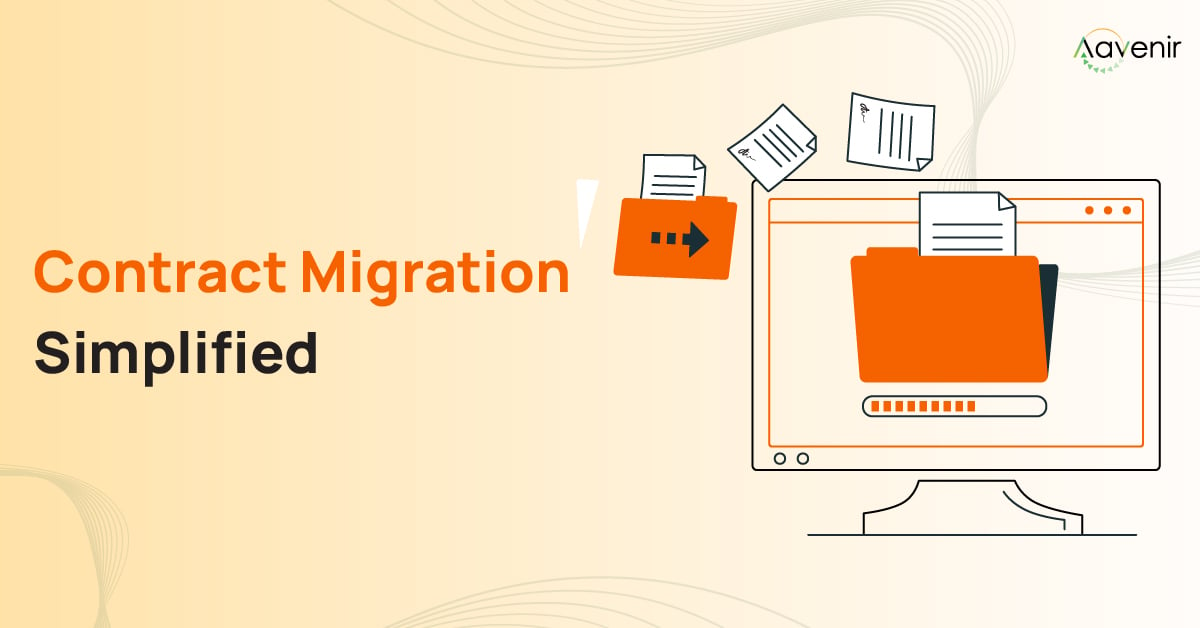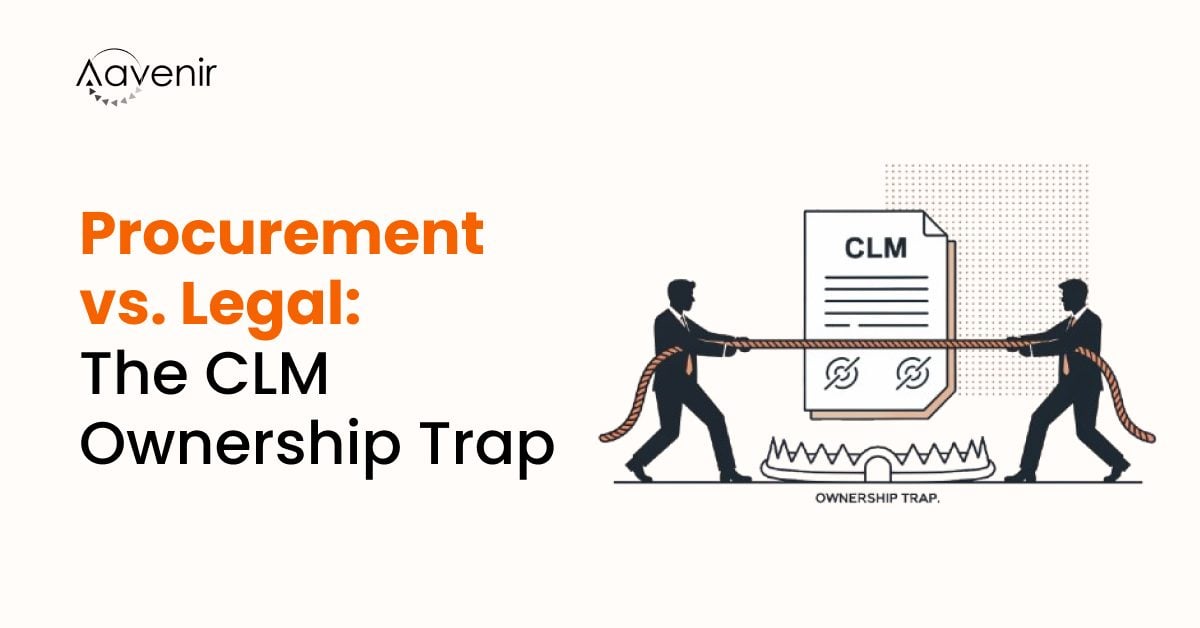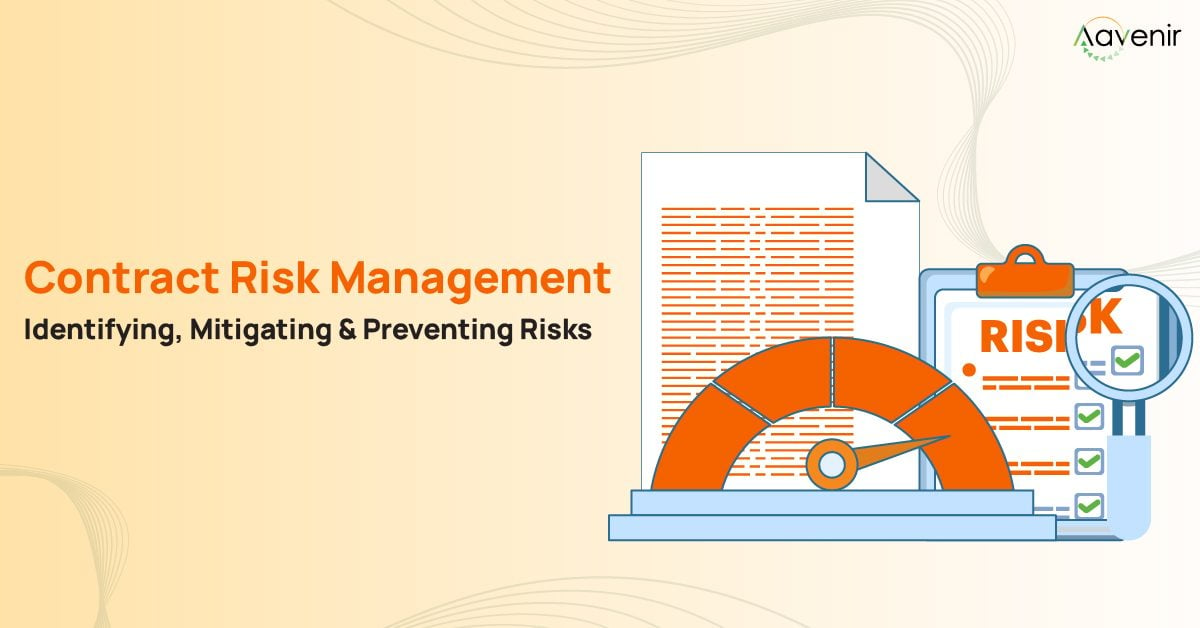As businesses become more digital, contract management is evolving in big ways. With companies growing, they often accumulate hundreds or even thousands of contracts spread across various storage systems—shared drives, local folders, email attachments, and even physical filing cabinets. This fragmentation creates significant operational challenges, from missed renewal dates to compliance vulnerabilities and inefficient contract administration.
Contract migration—the process of moving these scattered agreements into a centralized, digital system—has become a critical initiative for forward-thinking organizations. But many legal and procurement teams find themselves asking, When is the right time to migrate? What’s involved in the process? And how can we ensure a successful transition without disrupting business operations?
This comprehensive guide answers these questions and provides a roadmap for a successful migration, helping you transform contract chaos into strategic clarity
What Is Contract Migration?
Contract migration is the systematic process of transferring contracts from disparate storage locations into a unified, centralized contract management system. The process involves more than simply moving files from one place to another; it’s about transforming unstructured contract documents into structured, searchable data that can be leveraged for business intelligence and operational efficiency.
True contract migration includes:
- Document consolidation: Gathering contracts from various repositories (network drives, email inboxes, local computers, filing cabinets) into a single systemData extraction: Converting static document text into structured data fields that can be searched, filtered, and analyzed
- Metadata tagging: Adding consistent information tags to contracts for improved searchability and reporting
- Standardization: Creating uniformity in how contracts are stored, categorized, and managed
- Digital transformation: Converting physical documents into searchable digital formats
According to World Commerce & Contracting, organizations lose an average of 9.2% of their annual revenue due to poor contract management. A significant portion of these losses stems from the inability to quickly locate contract information when needed—a problem that effective contract migration directly addresses.
Real-World Example
A mid-sized manufacturing company with 20 years of operational history had contracts scattered across six different storage systems. When faced with an unexpected compliance audit, their legal team spent nearly three weeks manually searching for relevant agreements, costing approximately $47,000 in legal fees and staff time. After implementing a structured contract migration, the same audit process took just two days the following year, with complete confidence that all relevant contracts had been identified.
Why Do Businesses Need to Migrate Contracts?
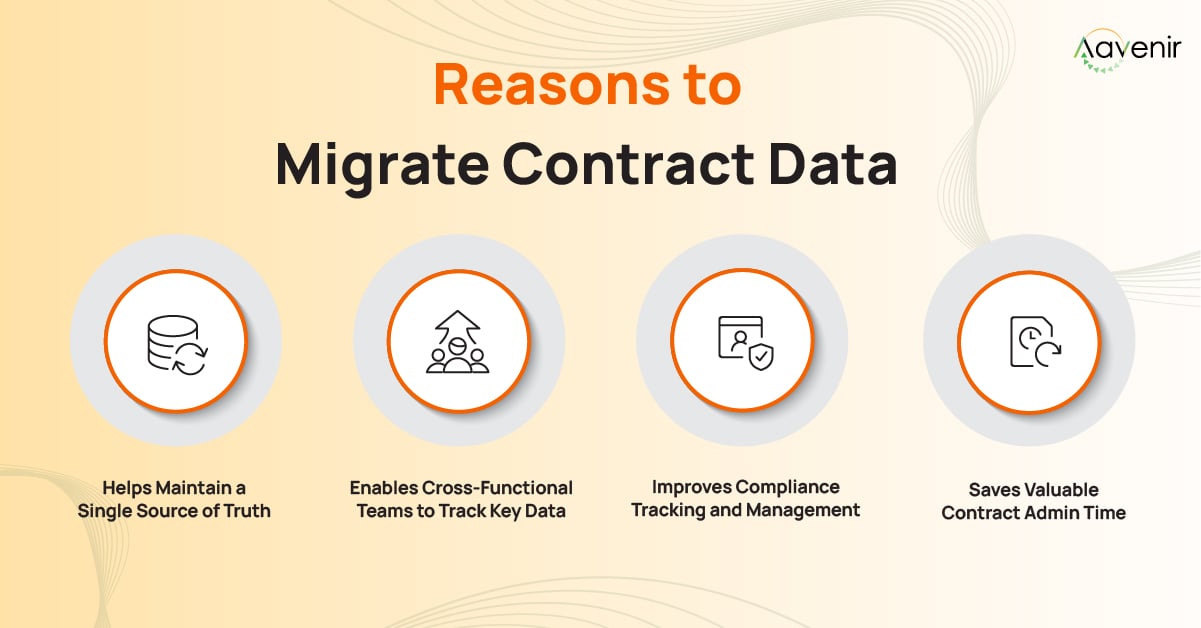
The motivation to migrate contracts typically emerges from acute pain points that impact an organization’s efficiency, risk profile, and bottom line. Understanding these drivers helps build the business case for migration and guides implementation priorities.
Understanding why contract migration is important goes beyond compliance—it’s about unlocking value, reducing risk, and enabling smarter decisions across teams.
Helps Maintain a Single Source of Truth
When contracts live in multiple locations, inconsistencies are inevitable. Different departments may maintain their own versions of the same agreement, creating confusion about which terms are actually in effect. This fragmentation leads to:
- Decision-making based on outdated information
- Unintentional breach of contractual obligations
- Missed opportunities to leverage negotiated terms
A centralized contract repository establishes a definitive version of each agreement that all stakeholders can access, eliminating version control problems and ensuring everyone works from the same information.
Enables Cross-Functional Teams to Track Key Data
Modern businesses operate across functional silos, with multiple departments needing contract information for different purposes:
- Finance needs payment terms and obligations
- Procurement tracks supplier commitments and performance metrics
- Legal monitors compliance requirements and liability exposures
- Sales references customer agreements for upsell opportunities
When contracts are migrated into a structured system, each team can access the specific data they need without sifting through entire documents or requesting information from other departments. This accessibility dramatically improves cross-functional collaboration and operational efficiency.
Improves Compliance Tracking and Management
Regulatory requirements continue to grow more complex across industries. Without a systematic way to track compliance obligations embedded in contracts, organizations face significant risks:
- Missing mandatory reporting deadlines
- Overlooking updated regulatory requirements
- Failing to maintain required certifications or insurance
- Incurring penalties for non-compliance
Proper contract migration includes tagging compliance requirements, enabling automated alerts and reports that help organizations stay ahead of obligations before they become problems.
Saves Valuable Contract Admin Time
The administrative burden of manual contract management is substantial. A study by Aberdeen Group found that companies without centralized contract management spend an average of 40 hours per week on contract administration tasks. This time gets consumed by:
- Searching for specific contract terms
- Manually tracking renewal dates
- Creating reports from disconnected data sources
- Responding to information requests from other departments
Migration to a unified system with structured data dramatically reduces this administrative overhead, freeing legal and procurement professionals to focus on strategic work rather than document hunting.
Step-By-Step Contract Migration Process
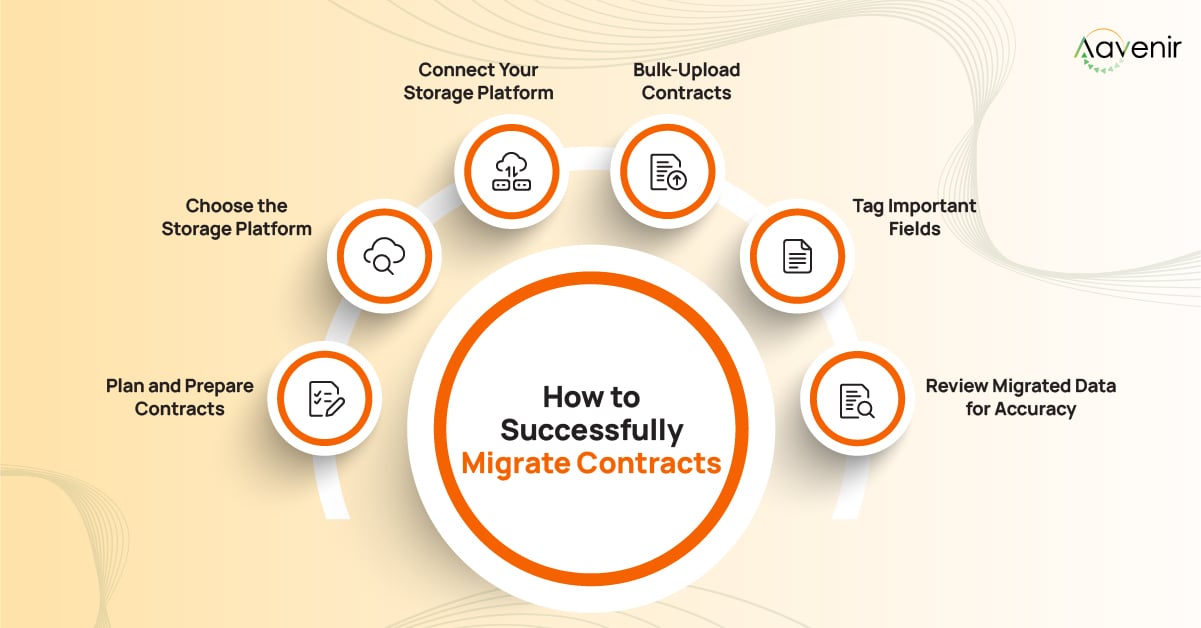
Successful contract migration follows a structured approach that minimizes disruption while maximizing data quality. While every organization’s needs differ slightly, this six-step framework provides a proven path to migration success:
Step 1: Plan and Prepare Contracts
Before initiating any technical migration, take time to assess your current contract landscape:
- Inventory existing contracts: Create a comprehensive list of all agreements, noting their storage locations, formats (digital vs. physical), and approximate volumes.
-
Establish migration criteria: Determine which contracts should be prioritized based on factors like:
- Value and strategic importance
- Expiration dates (prioritize active contracts)
- Compliance requirements
- Frequency of reference
-
Define data requirements: These preparation steps form the foundation of a strong contract migration strategy that aligns with business goals and avoids unnecessary disruption. Identify what information needs to be extracted from each contract, such as:
- Basic metadata (parties, effective dates, expiration dates)
- Financial terms (pricing, payment schedules)
- Performance obligations
- Renewal terms
- Compliance requirements
- Cleanse and deduplicate: Remove redundant or obsolete contracts to streamline the migration process.
A thorough planning phase significantly reduces complications during technical implementation. Organizations that invest time in contract preparation typically experience 40% fewer issues during the actual migration process.
Step 2: Choose the Storage Platform
The selection of your contract repository is perhaps the most critical decision in the migration process. The right platform should align with your organization’s specific needs and long-term contract management strategy.
Key considerations include:
- Scalability: Can the system grow with your contract volume?
- Search functionality: How granular and flexible are the search capabilities?
- Integration capacity: Does it connect with other critical business systems (ERP, CRM, e-signature)?
- Automation capabilities: What processes can be streamlined through automation?
- Security features: What protections exist for sensitive valuable contract data?
- AI capabilities: Does the system offer intelligent data extraction and analysis?
Many organizations opt for purpose-built contract lifecycle management (CLM) solutions that offer specialized features for contract management rather than generic document storage systems that lack contract-specific functionality.
Step 3: Connect Your Storage Platform
Once you’ve selected a platform, establish the technical connections between existing storage locations and your new centralized system:
- Configure API connections: Set up automated feeds from compatible digital sources.
- Establish secure file transfer protocols: Create pathways for bulk document imports.
- Set up scanning workflows: For physical documents that need digitization.
- Define access controls: Determine who can view, edit, or manage contracts in the new system.
- Test connectivity: Verify that all connections work properly before proceeding with full migration.
This foundation ensures smooth data flow during the actual migration process and prevents technical bottlenecks that could delay implementation.
Step 4: Bulk-Upload Contracts
With proper preparation and connections in place, you can begin transferring contract documents into your new system:
- Batch process by contract type: Migrate similar contracts together to streamline data extraction.
- Convert formats as needed: Transform scanned images to searchable PDFs using OCR technology.
- Preserve document integrity: Ensure no data is lost or corrupted during transfer.
- Maintain audit trails: Document the source and migration date for each contract.
- Validate document quality: Confirm that all pages and attachments transferred correctly. This ensures that the data migration is not just complete, but also accurate and reliable for future reference.
Modern CLM platforms like Aavenir Contractflow support bulk upload capabilities that dramatically accelerate this process, reducing what could be weeks of manual work to just hours of automated processing.
Step 5: Tag Important Fields
The true value of contract migration emerges when static documents become structured data. This transformation happens through metadata tagging:
-
Extract key contract data: Identify and capture critical information fields such as:
- Contract parties and signatories
- Effective and termination dates
- Renewal terms and notice periods
- Payment terms and pricing schedules
- Service level agreements
- Compliance requirements
- Apply consistent taxonomy: Use standardized naming conventions and categories for all contracts.
- Leverage AI for efficiency: Advanced CLM platforms use artificial intelligence to automatically identify and extract key fields, dramatically reducing manual effort.
- Custom tag creation: Develop organization-specific tags that align with your business processes and reporting needs.
Proper tagging transforms static documents into a dynamic contract database that supports business intelligence, compliance management, and operational efficiency.
Step 6: Review Migrated Data for Accuracy
The final but crucial step ensures the integrity of your newly centralized contract repository:
- Sample testing: Review a statistically significant sample of migrated contracts to verify data accuracy.
- Validation protocols: Establish specific checks for high-risk or high-value agreements.
- User acceptance testing: Have end users verify that the system meets their information needs.
- Report reconciliation: Confirm that system reports match expected outcomes based on known contract data.
- Remediation planning: Develop processes to address any data quality issues discovered during validation.
Organizations that implement rigorous quality assurance during migration report 68% fewer data-related issues in the following year, according to research from Gartner.
5 Best Practices for Effective Contract Migration
Beyond the step-by-step process, these proven practices help ensure migration success:
Cleanse Irrelevant or Duplicate Contracts
Contract repositories often accumulate redundant or obsolete agreements over time. Before migration, conduct a thorough cleanup:
- Remove duplicate contracts that exist in multiple locations
- Archive expired agreements with no ongoing obligations
- Consolidate amendments with their parent contracts
- Identify superseded agreements that no longer govern relationships
This pre-migration cleansing prevents cluttering your new system with unnecessary documents and reduces migration time and costs. Organizations that perform this cleansing typically reduce their contract volume by 15-30%, streamlining both the migration process and ongoing contract management.
Run a Pilot Migration First
Before committing to full-scale implementation, conduct a limited migration test:
- Select a representative sample of contracts (varying in type, complexity, and format)
- Migrate this sample following your planned process
- Evaluate results for data quality, completeness, and system performance
- Identify and address any issues before proceeding with full migration
This pilot approach allows you to refine your migration methodology with minimal risk. Companies that run pilot migrations report 40% fewer issues during full implementation compared to those that immediately migrate their entire contract portfolio.
Use a Platform That Supports Bulk Imports
The efficiency of your migration largely depends on your chosen platform’s capabilities. Look for systems that offer:
- Batch processing of multiple contracts simultaneously
- Configurable import templates for different contract types
- Automated field mapping between source data and destination fields
- Progress tracking and error handling during imports
- Validation rules to flag potential data quality issues
Bulk import functionality can reduce migration timeframes from months to weeks, or even days for smaller contract portfolios.
Leverage AI and OCR for Data Extraction
Manual data entry is the most time-consuming and error-prone aspect of contract migration. Modern technologies offer powerful alternatives:
- Optical Character Recognition (OCR): Converts scanned documents into machine-readable text
- Natural Language Processing (NLP): Identifies key clauses and terms within contract text
- Machine Learning: Improves extraction accuracy over time by learning from corrections
AI-powered extraction can identify and capture over 90% of standard contract fields automatically, reducing manual review to exception handling rather than primary data entry.
Organize Contracts With Tags and Folders
A thoughtful organizational structure maximizes the value of your migrated contracts:
- Develop a consistent folder hierarchy: Organize by department, contract type, counterparty, or other logical divisions
- Create standardized tags: Establish a controlled vocabulary for categorizing agreements
- Implement status indicators: Clearly mark active vs. expired contracts
- Use risk or value classifications: Flag agreements requiring special monitoring
- Apply compliance categories: Tag contracts subject to specific regulatory requirements
This structured approach ensures that contract organization remains consistent as your repository grows, preserving searchability and reporting capabilities.
Migrate Legacy Contracts Effortlessly With Aavenir Contractflow
Legacy contract migration and successful digital transformation require both strategic planning and powerful technology. Aavenir Contractflow delivers the comprehensive functionality organizations need to transform contract chaos into strategic clarity:
Intelligent Data Extraction with AI
AI in contract management automatically identifies and captures key information from contracts, regardless of format or structure:
- Recognizes over 50 standard contract fields without configuration
- Learns organization-specific terms and clauses through machine learning
- Processes both digital and scanned documents with high accuracy
- Highlights extraction confidence levels to prioritize human review
This intelligent approach reduces data entry time by up to 80% compared to manual methods, while maintaining or improving accuracy. AIP ensures not just speed but exceptional precision in contract analysis, minimizing the risks associated with human error during migration.
Centralization and Organization
Contractflow creates a true centralized hub for all your contract assets:
- Unified repository for agreements across the entire organization
- Smart folder structures based on contract types and business units
- Advanced search capabilities for instant document retrieval
- Version control that eliminates confusion about current terms
- Elimination of siloed contract storage across departments
This centralization improves visibility into your entire contract portfolio, ensuring nothing falls through the cracks during the migration process or afterward.
Enhanced Compliance and Risk Management
Migrating to Aavenir Contractflow provides powerful compliance safeguards:
- Automated compliance tracking for regulatory requirements
- Real-time risk scoring of contract terms and conditions
- Proactive alerts for potential compliance issues
- Standardized templates enforcing approved language
- Complete audit trails for all contract activities
These risk management features help organizations reduce their exposure to non-compliance penalties and litigation risks by ensuring consistent enforcement of standard terms and conditions.
Flexible Import Options
Contractflow accommodates diverse contract sources with multiple import pathways:
- Direct integration with cloud storage platforms (Google Drive, OneDrive, Dropbox)
- Bulk upload from local drives and network folders
- Email-to-repository functionality for contracts received via email
- API connections to existing document management systems
- Scanning interface for physical contract conversion
This flexibility ensures that no contract is left behind, regardless of its original storage location.
Comprehensive Metadata Framework
Beyond basic contract data, Aavenir supports rich metadata tagging that transforms static documents into actionable business intelligence:
- Customizable field definitions aligned with business processes
- Hierarchical tag structures for nuanced categorization
- Automated tag suggestions based on contract content
- Multi-dimensional classification for complex reporting needs
- Dynamic field relationships that capture dependencies between terms
This metadata framework powers advanced analytics and reporting that help organizations extract strategic value from their contract portfolio.
Cost Savings Through Automation
The automation capabilities of Aavenir Contractflow deliver measurable financial benefits:
- Reduced administrative overhead from manual contract management
- Decreased legal review costs through standardization
- Minimized risk of penalties from missed deadlines
- Lower storage costs compared to physical document maintenance
- Recovered revenue through better visibility into pricing terms
Organizations typically report 30-45% reduction in contract administration costs after migration to Aavenir Contractflow, with additional savings from improved contract terms and conditions.
Improved Cross-Functional Collaboration
Aavenir Contractflow breaks down departmental silos with features that promote teamwork:
- Role-based access controls that share information appropriately
- Collaborative workflow tools for multi-stakeholder reviews
- Real-time commenting and redlining capabilities
- Mobile access for on-the-go contract management
- Integration with communication tools for seamless notifications
These collaboration features ensure that contract knowledge becomes a shared asset rather than isolated information, improving decision-making across the organization.
Enterprise-Grade Security
Contractflow protects sensitive contract information through multiple security layers:
- Role-based access controls that limit visibility to authorized users
- Encryption for data both in transit and at rest
- Comprehensive audit trails tracking document access and changes
- Compliance with major security standards (SOC 2, GDPR, HIPAA)
- Granular permission settings down to the individual document level
These protections ensure that contract centralization enhances rather than compromises your security posture.
Data Insights and Strategic Reporting
Aavenir Intelligence Platform transforms your contract repository into a strategic intelligence asset:
- Customizable dashboards for contract performance metrics
- Trend analysis for negotiation strategy development
- Obligation tracking across your contract portfolio
- Financial impact assessment of contract terms
- Supplier and customer relationship insights
These analytical capabilities help organizations move from reactive contract management to proactive strategic planning.
Scalability for Growing Organizations
Aavenir Contractflow grows with your business needs:
- Handles contract volumes from hundreds to millions of documents
- Maintains performance regardless of repository size
- Supports multi-entity and multi-jurisdiction requirements
- Adapts to evolving compliance landscapes
- Expands capabilities through modular feature additions
This scalability ensures that your migration investment continues to deliver value as your organization grows and evolves.
Seamless Integration Ecosystem
Aavenir Contractflow connects contract data with the broader business technology landscape:
- Native integration with major ERP platforms
- Bidirectional CRM synchronization
- E-signature platform connections
- Financial system integrations
- HRIS data exchange capabilities
These connections ensure that contract information flows smoothly across your organization, informing decisions and processes throughout the business.
Transforming Contract Management Through Strategic Migration
Contract migration represents more than a technical process of moving documents—it’s a strategic transformation that converts static agreements into dynamic business assets. When executed thoughtfully, this transformation delivers measurable benefits across the organization:
- Risk reduction through improved visibility into obligations and compliance requirements
- Cost savings from recovered revenue leakage and reduced administrative overhead
- Operational efficiency through automated workflows and self-service access
- Strategic insight from comprehensive contract analytics and reporting
The journey begins with understanding your current contract landscape, establishing clear objectives for centralization, and selecting the right technology partner to support your transformation.
By following the structured approach outlined in this guide—planning thoroughly, choosing the right platform, implementing in phases, and validating results—organizations can navigate the migration process successfully and unlock the full value of their contract portfolio.
Ready to transform your new contract management system through strategic migration? Explore how Aavenir Contractflow can simplify your journey from contract chaos to centralized clarity.
Frequently Asked Questions on Contract Migration
-
How long does it take to migrate legacy contracts?
The timeline for contract migration varies based on several factors:
1. Volume: A portfolio of 500 contracts typically requires 2-4 weeks for complete migration, while enterprises with 10,000+ contracts may need 3-6 months.
2. Complexity: Highly standardized agreements migrate more quickly than custom contracts requiring individual review.
3. Quality of source documents: Clean digital files process faster than poor-quality scans or handwritten annotations.
4. Extraction automation: AI-powered platforms like Aavenir can reduce migration time by 60-80% compared to manual methods.Most organizations see significant results within the first month of implementation, even if complete migration extends over a longer period.
-
What types of contracts should be prioritized during migration?
Strategic prioritization ensures early value from your migration effort:
1. High-value agreements with significant financial impact
2. Contracts approaching renewal within the next 3-6 months
3. Agreements with compliance implications or regulatory requirements
4. Contracts frequently referenced by business teams
5. Standard templates used for recurring business relationshipsThis approach delivers immediate operational benefits while spreading the migration workload over a manageable timeline.
-
Is it possible to migrate contracts that are still in PDF or scanned format?
Yes, modern contract management platforms handle various document formats:
1. Native PDFs can be directly imported while preserving searchability
2. Scanned documents are processed through OCR technology to convert images to searchable text
3.Image-only files (JPG, PNG) can be converted to searchable PDFs during import
4. Paper documents can be scanned and then processed through the same OCR pipelineAavenir Contractflow’s advanced OCR capabilities achieve over 95% accuracy in extracting text from properly scanned documents, making even image-based contracts fully searchable and analyzable.
-
Is it possible to migrate paper contracts into a repository?
Yes, physical contracts can be successfully migrated through a slightly extended process:
1. Scanning: Convert paper documents to high-quality digital images (300 DPI or higher recommended)
2. OCR processing: Transform scanned images into searchable text
3. Quality verification: Ensure the digital version captures all pages and attachments
4. Data extraction: Identify and capture key terms from the digitized text
5. Original preservation: Maintain physical originals according to your retention policyOrganizations migrating substantial paper archives often partner with scanning service providers to manage the digitization process efficiently.
-
How to migrate contracts stored across multiple storage locations like drives, local folders, and emails?
Multi-source migration requires a coordinated approach:
1. Inventory all locations: Create a comprehensive map of where contracts reside
2. Standardize file naming: Apply consistent conventions before consolidation
3. Use multi-channel import tools: Leverage platforms with built-in connectors to various storage systems
4. Implement deduplication: Identify and resolve duplicate contracts across sources
5. Track migration progress: Monitor completion by source to ensure comprehensive coverage


